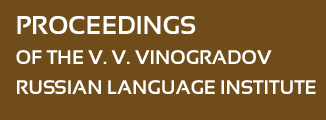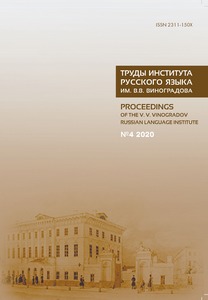FEATURES OF THE CULTURE OF COGNITION IN THE DIGITAL AGE: TRADITIONS AND INNOVATIONS IN THE FIELD OF ORTHOEPY
Abstract:
Each cultural and historical epoch has some peculiarities of the transmission and dissemination of orthoepic knowledge. This article attempts to analyze the distinctive features of the period called (depending on the type of tasks being solved) post-Soviet, digital, media-centric. In search of an answer to this question, the following range of problems came into our fi eld of view: tools for infl uencing the pronunciation behavior and views of native speakers and their transformation and reformatting in the 21st cen tury; steps in the development of “lexicography” in relation to orthoepy; signs of a stable lexicographic situation in the second half of the 20th century. (compliance with the prin ciples of lexicographic description of orthoepic material; limited vocabulary and their recognition by linguists and practitioners; the attitude of the cultural and speech com munity to codifi cation, etc.); indicators of “normative uncertainty” in the XXI century. (the presence of compiled and “nameless” descriptions; violation of traditions in the sys tematization of pronunciation information and narrowing of the amount of information in descriptions of a normative nature; shifts in the culture of cognition; competition of codifi cation and authoritative example; new mentors, etc.). Within the framework of the topic under discussion, two more issues turned out to be no less relevant: one is related to the rational use of the opportunities that the digital age opens up for normalizers and native speakers; the second concerns the responsibility of both lexicographers and nu merous mentor consultants.


